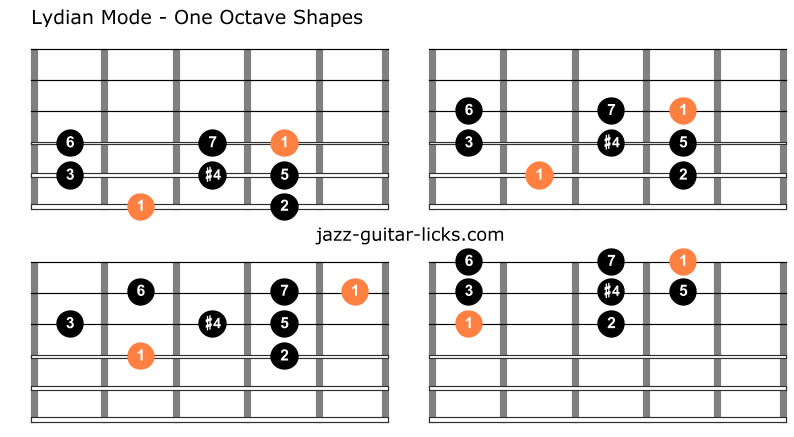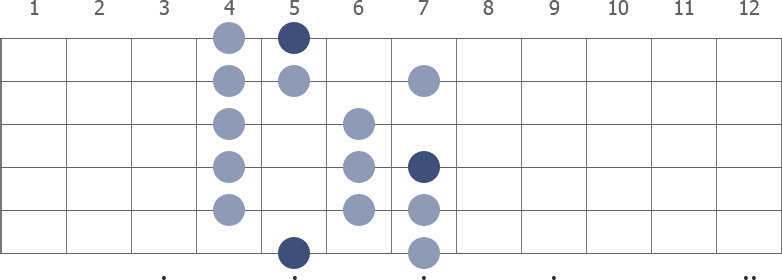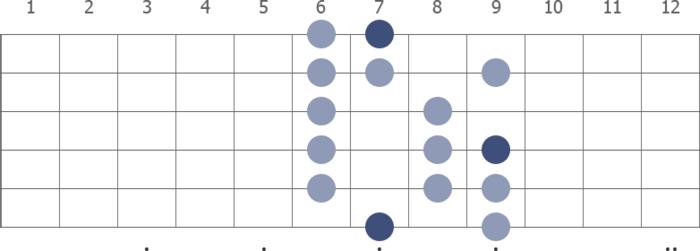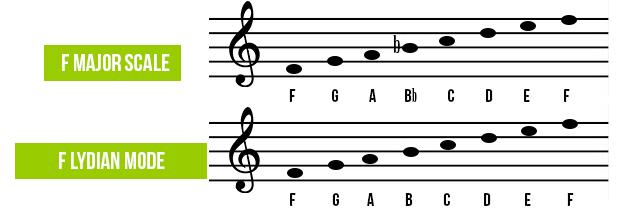Introduction to the Lydian Scale
Imagine unlocking a door to a whole new realm of musical expression with just one scale. That’s precisely what happened when I discovered the Lydian scale and its transformative power on the guitar. This scale isn’t merely a collection of notes; it’s a gateway to unparalleled creativity. As a lifelong guitar enthusiast, I’ve encountered countless scales, but the Lydian scale holds a unique charm that inspires creativity in unexpected ways.
In the world of music theory, the Lydian scale is renowned for its dreamy and ethereal sound, setting it apart from other musical modes. But what makes this scale truly fascinating is its versatility; it can shift the mood of any piece almost effortlessly. From understanding its theoretical foundations to applying it seamlessly in your guitar playing, this article will guide you through harnessing the Lydian scale’s potential. Whether you’re seeking to create mesmerizing licks or explore its application in familiar chord progressions, let’s embark on this journey together to master the art of the Lydian scale.
Theoretical Foundations of the Lydian Scale

With my background in Contemporary Improvisation, understanding the theoretical underpinnings of the Lydian mode deepens my appreciation for its unique character and application. Did you know that the Lydian scale is often considered the most harmonious of all the musical modes? Let’s explore why. The Lydian mode distinguishes itself by altering just one note from the standard major scale—the raised fourth or an augmented fourth interval. This subtle shift imbues the scale with a sense of *wonder* and *expansiveness* that has captivated musicians for centuries.
The Lydian mode begins on the fourth degree of its relative major scale, which changes the location of the semitones, placing one between the fourth and fifth scale degrees. This adjustment creates a whole-step between the tonic and the raised fourth, lending it a naturally bright and open sound. When I first started integrating the Lydian mode into my improvisations, I discovered its versatility—how it can color a piece with its own signature brilliance.
This scale often allows compositions to *breathe*, providing a *canvas of creativity* that composers can paint on freely. As you delve deeper into the Lydian scale, you’ll start to notice how it can transform the ambiance of your music, offering a fresh palette of possibilities that can revitalize familiar chord progressions.
How to Play the Lydian Scale on Guitar
Understanding the Lydian Scale Pattern

Unlocking the true potential of the Lydian scale on the guitar begins with understanding its unique pattern. Over the years, I’ve experimented with various patterns on the fretboard, and I found that visualizing the Lydian scale as a sequence of intervals can significantly enhance your playing. The scale is characterized by its *sharp fourth degree*, which gives it that *distinctive sound* crucial to its charm.
To start playing the Lydian scale, locate the root note on your guitar and *ascend in whole steps*, incorporating that essential #4. This pattern will guide your fingers across the fretboard with clarity and precision. Consistently practicing *Lydian guitar exercises* solidifies this scale’s interval structure in your mind and fingers. Transitioning smoothly from practice to application, these exercises not only improve technical skills but also inspire creative exploration in *guitar improvisation* and songwriting.
Understanding these patterns allows you to effectively fuse them into *chord progressions* and improvisational contexts, thus making the Lydian scale not just a theoretical construct but a tangible tool in your musician’s arsenal. Next, we’ll delve deeper into applying these patterns to create engaging chord progressions, transforming theory into evocative musical expression.
Applying Lydian Scale to Chord Progressions

As I’ve delved into the rich tapestry of music, the Lydian scale emerged as a captivating soundscape, particularly when exploring its applications over chord progressions. To effectively apply the Lydian scale on guitar, it’s crucial to match its distinctive, augmented fourth interval to compatible chords. One approach is to use it over major chords, emphasizing its bright, expansive sound, often leading to a sense of resolution and lift within compositions.
Experimenting with various chord progressions reveals the Lydian scale’s unique flavor. For instance, try improvising over a progression like Cmaj7 to Gmaj7, using the C Lydian scale. This strategy not only brings out the scale’s characteristic sharpness but also adds an ethereal quality, enhancing your musical repertoire. As an editor and writer, I’ve analyzed countless songs that effectively utilize the Lydian scale in this way, highlighting its role in creating otherworldly and engaging soundscapes.
Transitioning thoughtfully from learning the fundamental scale pattern to applying it on chords enriches your guitar play, providing a foundation for more advanced improvisations and unique lick creation. Next, we’ll explore how to elevate your improvisation skills using the Lydian scale, adding depth to your musical expression.
Guitar Improvisation with the Lydian Scale
Creating Licks using the Lydian Scale

In my practice sessions, *crafting licks* based on the Lydian scale has *transformed my improvisational style* and opened avenues for fresh ideas. Lydian’s *distinctive characteristics* create vibrant and unexpected musical phrases that captivate both players and listeners. To create engaging *guitar licks*, I start by embracing the scale’s signature raised fourth, which naturally encourages creative tension and resolution. By *experimenting with intervals* and incorporating slides, bends, and vibrato, I enhance the expressive quality of each lick.
The process involves dissecting the scale to understand its rich harmonic potential. This is where the true power of the Lydian scale lies—it offers a *textural palette* that can shift from dreamy to intense within a single phrase. Drawing inspiration from its unique scale pattern, I weave *melodies that interlock naturally* with various chord progressions, ensuring versatility in improvisation. With each lick, I discover new pathways in the sonic space of my music, thereby expanding my improvisational vocabulary.
Famous Songs Featuring the Lydian Scale

Transitioning from theory to tangible examples, exploring famous songs using the Lydian scale provides a fascinating lens through which to understand its unique sound. A passionate music researcher and guitarist, I have delved into numerous iconic tracks, discovering how this scale elevates compositions with its characteristic dreamy and uplifting tonality. Songs like “Flying in a Blue Dream” by Joe Satriani or “Jane Says” by Jane’s Addiction, harness the distinctive flavor of the Lydian, adding a nuanced color often coveted in guitar improvisation.
Understanding these applications of the Lydian scale not only reveals its powerful capacity to evoke specific emotions but also underscores its relevance in crafting memorable solos. The use of a raised fourth creates a tension and resolution dynamic that lends itself beautifully to improvisation, encouraging creativity and expression. These famous compositions not only serve as inspiration but also as practical guides for integrating the Lydian scale into your improvisational toolkit, enhancing your overall mastery and approach to the instrument.
Practice Exercises for Mastering the Lydian Scale

Are you ready to take your guitar skills to the next level? Let’s dive into focused exercises that will make the Lydian scale second nature. Having spent countless hours honing my craft, I’ve developed numerous practical exercises tailored to the Lydian scale, each designed to enhance both technique and musical understanding. The allure of the Lydian mode lies in its bright, ethereal sound, making it a favorite for many guitarists aiming to enrich their tonal palette. Mastering this scale involves more than finger dexterity; it requires a deep understanding of its characteristic intervals and how they interplay on the fretboard.
To start, I recommend mapping out the notated scales across the neck. Begin in a comfortable position, such as the fifth fret, and slowly play through each note, ensuring clarity and confidence in your sound. This warms you up and helps internalize the linear patterns unique to the Lydian scale. As you become more familiar, challenge yourself with intervallic exploration. Practice jumping from the root to the sharp fourth, an interval that gives the Lydian its distinct flavor. Incorporating these Lydian guitar exercises into your routine will build agility and an intuitive connection to the mode.
My favorite exercise involves creating simple licks and then transposing them to various keys, solidifying your grasp of this expressive scale. The more you practice in different contexts, the more naturally the Lydian sound will flow through your improvisation and compositions.
FAQs about the Lydian Scale
“`html
What is the Lydian scale on the guitar?
How do I apply the Lydian scale in guitar playing?
Can you recommend exercises for mastering the Lydian scale on guitar?
Why should guitarists learn the Lydian scale?
“`
Conclusion
As we wrap up, let’s consider one final thought: How might the Lydian scale reshape your approach to music and guitar playing? Reflecting on my journey with the Lydian scale, I believe it’s not just a technical exercise, but a pathway to elevate musical expression. Understanding music theory provides a strong foundation, guiding you to unlock new soundscapes.
The Lydian scale offers unique tonal possibilities, compelling us to explore beyond conventional harmonies. This exploration enriches chord progressions and inspires innovative improvisation. As you integrate this scale into your practice, every playful lick and instrumental nuance will broaden your musical palate, transforming your guitar journey into an enriching experience.

